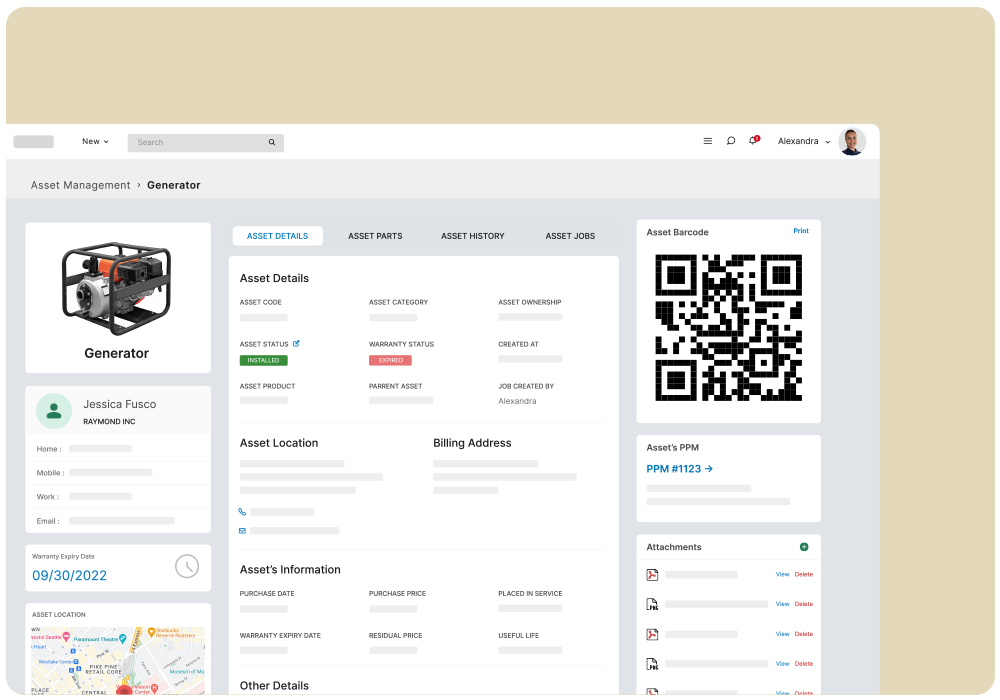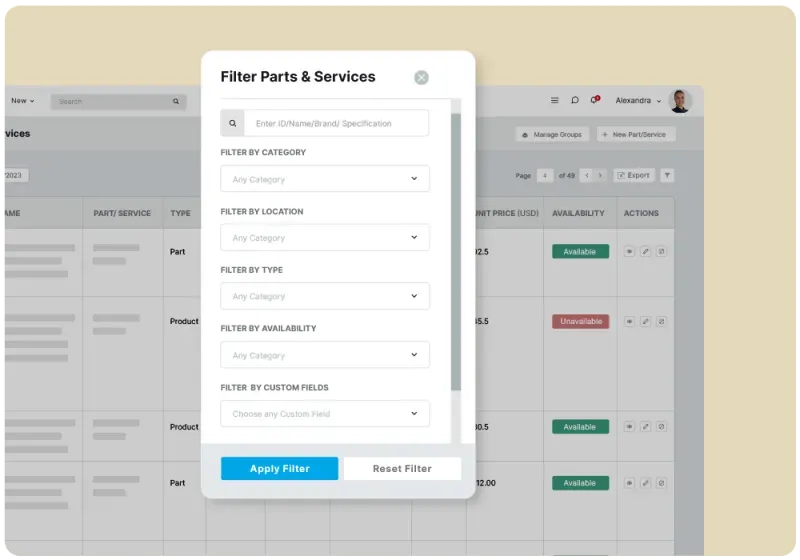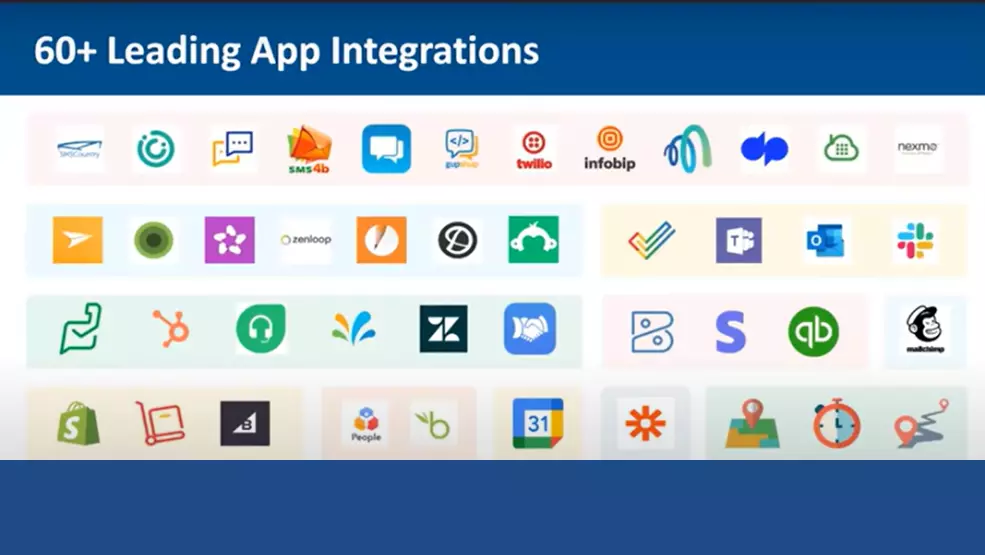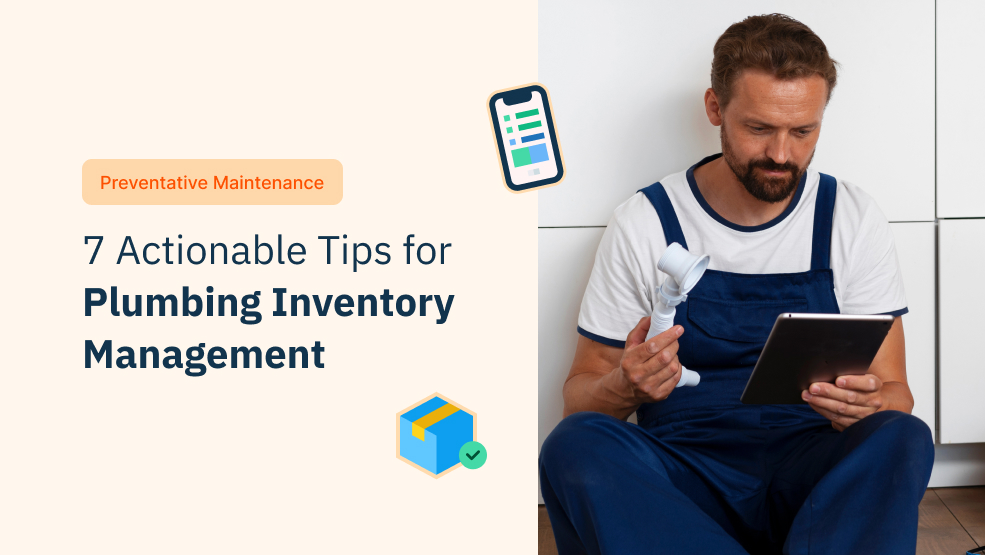Have you ever raced to a job only to realize you are missing a crucial component? Or maybe you are constantly carrying extra supplies that you rarely use—increasing your fuel costs and taking up valuable space. Does any of this sound familiar? Inventory management can be a hassle, frustrating customers, losing revenue, and leading to wasted time for plumbing technicians. We are here to tell you 7 easy-to-follow tips that will whip your stock management into shape. Follow them religiously, and you will never find yourself without what you need.
Short and long-term impact of inventory management
Is the management of inventory that big a deal in the plumbing business? Well, it is if you care about your customer’s happiness. Customer happiness is the crux of business, and not having an advanced technological solution for inventory management could lead to awkward delays. Awkward delays are just the starting point of poor service. Not having the parts needed during a service visit not only creates friction with the customer in the short-term, it also impacts your revenue generation in the long-term. Understocking and overstocking are real issues that can seriously affect your profitability.
1. Ensure adequate stock levels by prioritizing your inventory
Choosing to make it a priority is the first step in streamlining your inventory management. Focusing on how your inventory is organized means deciding how to categorize parts, tools, and other components. We have a few thoughts on how you might choose to do this:
A Group: These items are high-ticket and have lower turnover rates. Examples include specialized tools or equipment. You need fewer of these items, but they are crucial for certain jobs.
B Group: These items fall in between A and C. They are moderately priced and have a moderate turnover rate. Examples include common replacement parts or materials.
C Group: These items are lower-cost and have a higher turnover rate. Examples include commonly used fittings or fasteners.
These classifications help to determine quantities and frequency with which stock is reordered. For example, you may only need to reorder items in Group A when stocks are running low, whereas for items in Group C, you may need to order in larger quantities to meet demand. In the sameway, frequencies of reordering also differ. It is sufficient if you reorder Group A items a few times a year, whereas items in Group C, may need to be reordered more frequently to guarantee sufficient stock levels. Management of plumbing inventory also aids in managing costs by identifying where to invest more or seek cost-saving opportunities.
2. Quickly retrieve information using product identifiers
To manage your plumbing inventory better, it is crucial to track all product information. This includes maintaining detailed records of product identifiers, descriptions, supplier information, pricing, stock levels, location, sales history, expiration dates (if applicable), reorder points, and integration with accounting software. By tracking this information, you can optimize your inventory levels, reduce stockouts, minimize carrying costs, and improve your overall profitability.
1. SKUs and barcode
Streamlining processes and saving time is our primary goal. You don’t want to disappoint your customer. Product identifiers like SKUs and barcodes can help by quickly retrieving product information. Let’s say you want a “brass kitchen faucet”. By simply scanning a barcode, you can instantly pull up the SKU data associated with it—” brass kitchen faucet.”

2. Product descriptions
Descriptions are another important thing that will help in the management of plumbing inventory. When you use clear descriptions for a product like “1/2 inch copper pipe” or “pressure relief valve,” it accurately represents the product’s features and purpose. A vague description like “pipe” could lead to wasted time and incorrect orders. This reduces confusion and ensures you are ordering/stocking the correct parts.
3. Supplier information
Supplier information is critical for maintaining stocks as you will clearly know who to contact for reorder, how long it takes to get parts, and optimal order sizes to avoid stocks or excess inventory. Supplier information should include contact details, lead times (time to receive an order), and minimum order quantities for your plumbing suppliers.
4. Cost fluctuations
Monitoring cost fluctuations helps manage inventory better. It helps with profitability. So, track your purchase price per item, which can be factored into your sales price. And you can set appropriate sales prices and identify cost trends that might require price adjustments.
5. Stock levels
Knowing how much of each product you have in stock prevents stockouts that can delay your plumbing jobs. So, Keep track of your stock level. This will allow you to reorder timely and ensure you don’t run out of critical parts during a project.

6. Location
Location information is another tip to save time while searching for parts. Location information helps you identify where each item is stored in your warehouse or store (“Aisle 3, Bin 12”). You will know exactly where to find what you need, streamlining your fulfillment process.
7. Sales history
Tracking your sales history helps you predict future demand by monitoring how many units of each product are sold over a specific period. Analyzing your sales history enables you to forecast which products will likely sell well and adjust your stock levels accordingly.
8. Reorder points
Reorder points indicate the minimum stock level at which you should reorder a product to avoid stockouts and maintain consistent inventory levels. By setting reorder points, you’ll be notified when it’s time to repurchase and avoid disruptions.
9. Integration with accounting software
Integrating your inventory data with your accounting software streamlines tasks like generating purchase orders and tracking inventory costs, saving you time and reducing errors. Automatic data exchange ensures consistency across your systems, enhancing efficiency in managing your plumbing inventory. Zuper field service management software integrates with third-party applications such as accounting, expense management, payroll, financing, CRM, ERP, and communication. Our top accounting integrations include

3. Analyze project history to forecast demands
In managing your plumbing inventory, it is crucial to forecast demand accurately. Start by tracking project history and analyzing past plumbing projects to identify commonly used parts like faucets, pipes, and toilet components for different job types such as bathroom remodels, leak repairs, and water heater installations. This analysis helps you predict demand for upcoming projects, allowing you to stock up on these items accordingly.
Consider seasonal trends as well. Be mindful of seasonal fluctuations in demand, such as stocking up on hose bibs and washing machine hoses before spring, and anticipating a rise in faucet repairs during winter freezes. By monitoring local permits and tracking new construction permits in your area, you can anticipate increased demand for plumbing supplies for new builds.
Taking these proactive steps in demand forecasting ensures that you have the right inventory on hand when you need it, reducing stockouts and improving overall efficiency in managing your plumbing inventory.
4. Regularly review and adjust your inventory plan
Creating an effective inventory plan requires you to manage and optimize your stock of goods or materials carefully. Your primary goal is to ensure that the right products are available in the right quantities, at the right time, and at the right cost. Start by setting clear objectives, which may include minimizing stockouts, reducing excess inventory, improving cash flow, and optimizing inventory turnover. Analyze demand by using historical sales data, market trends, and seasonality to forecast future demand for each product. Consider external factors like promotions, marketing campaigns, and economic conditions during this analysis.
Determine stock levels by calculating the minimum stock level, reorder point, and safety stock for each product. The minimum stock level ensures that there is always a certain quantity on hand, while the reorder point indicates when it is time to reorder more stock. The safety stock acts as a buffer to account for variability in demand and lead times. Use inventory management techniques such as just-in-time (JIT) inventory, economic order quantity (EOQ), or ABC analysis to categorize products based on value and manage them accordingly.
Establish strong supplier relationships to ensure timely delivery and competitive pricing. Using multiple suppliers for critical items can help reduce the risk of stockouts. Implement inventory controls, such as barcode scanners, RFID technology, or inventory management software, to track inventory levels, monitor stock movements, and reconcile discrepancies accurately.
Finally, regularly review and adjust your inventory plan to adapt to changing demand patterns, supplier performance, and business goals. By following these steps and continuously refining your inventory plan, you can effectively manage your inventory and improve overall operational efficiency.
5. Build a strong and reliable relationship with your supplier
To better manage your plumbing inventory, focus on building strong relationships with reliable suppliers who specialize in plumbing parts for your preferred brands. This ensures you have access to specific parts and fosters better technical support. Imagine you are in the middle of a big plumbing repair job. Thanks to your solid relationship with a specialized supplier, you quickly source all the parts you need, from faucets to valves, ensuring a seamless repair process. When negotiating, aim for bulk discounts on commonly needed repair parts like flappers and washers. This savvy move not only cuts your costs but also streamlines your inventory management.
Picture this: you are in the middle of a busy season, and a client’s toilet needs urgent repairs. Thanks to your foresight, you have a backup plan in place. Your relationship with a secondary supplier comes to the rescue, ensuring your project stays on track even when faced with unexpected delays or stockouts from your primary supplier. By implementing these strategies, you’ll be a go-to plumbing repair service, always prepared and equipped to handle any situation that comes your way.
6. Invest in inventory management software
Investing in inventory management software designed for plumbers can also greatly improve your inventory optimization efforts. These software solutions can track your inventory levels in real time, automate reordering processes, and provide insights into usage patterns and trends. By leveraging the power of technology, you can streamline your inventory management processes, reduce manual errors, and ensure you always have the right items in stock. Take, for example, Zuper inventory management software. Using it, you can
- Keep track of your warehouse and mobile stock easily with Zuper’s inventory system. See all your spare parts on your phone or tablet. When the warehouse and the app match up, technicians can find parts faster and fix things quicker. This means less waiting for parts to arrive.
- Find what you need in your inventory quickly. Zuper’s mobile apps let technicians check what parts are in stock in real-time. They can search by name, serial number, or ID easily.
- Help customers faster by knowing their equipment history. Zuper keeps track of when equipment was last serviced, what needs to be done, and what parts have been used or replaced.
- Set prices and keep track of stock easily. Zuper helps you set buying and selling prices for parts. It also keeps track of what’s in stock and what’s been used. Your customer database stays updated too.
- Make sure only the right people can access certain information. Zuper lets you control who sees what, and you can set up automatic actions when specific things happen.
- See how your business is doing with real-time numbers. Zuper shows you how much you’re spending on parts, what you’re making from selling them, and other important numbers. This can help you save money and keep better track of your inventory.
- Connect Zuper with other tools you use. Zuper can work with your customer database or tools you use to order parts. This makes reordering parts and keeping track of inventory even easier.
7. Minimize storage with consignment-level agreements
Considering consignment inventory involves assessing your business needs and determining if this strategy is suitable. This approach can benefit both parties by reducing the risk for the customer and increasing product exposure for the supplier. To start, identify potential suppliers willing to offer consignment arrangements and negotiate terms such as inventory levels, payment terms, and inventory management responsibilities. Implement inventory controls to track consignment inventory accurately and monitor performance regularly to ensure the arrangement is beneficial. Be prepared to adjust terms based on performance, modifying inventory levels or product offerings as needed. For example, XYZ Retailer, a seller of outdoor equipment, could use consignment inventory for camping gear to offer a wider variety without heavy upfront investment. They could work with a camping gear manufacturer on consignment terms, tracking inventory levels and sales to optimize the arrangement for both parties.
Never find yourself without what you need!
It is now crystal clear that the management of plumbing operations needs an effective inventory system. Inventory management software comes with a range of benefits that keep operations smooth and customers happy. So, if you are investing in getting a software solution, you can avoid costly delays and unwanted frustrations. Don’t have second thoughts about purchasing an inventory software product like Zuper. Zuper being the most adaptable and powerful field service management solution, promises the best-in-class customer experience with flexible solutions. With Zuper, you will never find yourself without what you need.
Book your free demo now!
Step up and be a force for good. For every T-shirt you wear, over 700 gallons of water is consumed. You hold the power to reclaim gallons of water with every garment you wear. Choose minimalism; Save water. Mindful closet for a sustainable future!



